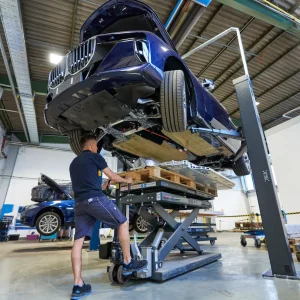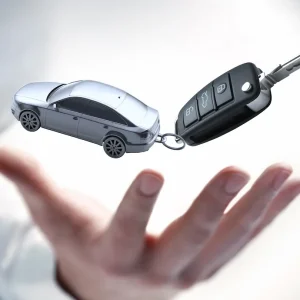When you consider all of the dangerous occupations out there, from construction workers to those in the front line of the fire and police services, it’s quite shocking to learn that in the UK four times as many people die while driving for work than all other workplace-related deaths.
To mitigate this risk, many companies invest in a wide range of driver training programmes and, since it was founded 60 years ago, IAM Roadsmart has been at the forefront of delivering road safety and helping drivers enhance their skills via its advanced driver training programme. Since its inception, almost 500,000 drivers have achieved the coveted Advanced Driver status.
Supported by an infrastructure of 190 groups spread across the UK, the charity is a leading road safety advocate. Its key objective is to reduce the number of people killed or seriously injured on UK roads, and it achieves this by delivering training courses, education programmes and coaching that focus on improving driving and riding skills for all user types.

“UK road strategy, levels of traffic and the general cost of motoring is constantly evolving so there is much more focus on observation and optimising vehicle performance to ensure that drivers get to their destination efficiently, quickly and within the rules of the road. Regardless of the journey purpose, we want all drivers, business and personal, to have a pleasurable and safe driving experience,” Tony Greenidge, the company’s business development director, tells us.
Take the wheel
“It’s very different, someone being taught to drive to pass the test, compared to the skills required for an employee who, based on the proportion of time spent behind the wheel, could be classified as a professional driver,” explains Greenidge.
“In the UK, you pass a test at 17 and your performance on that one day potentially allows you to continue driving indefinitely with no further testing requirement.” Some drivers, especially younger ones, have a lack of ‘on road’ experience and it could be argued that they are more susceptible to being distracted at the wheel by in-car technology or other, typically smartphone-related, interactions that are vying for their attention. “Working right across the UK, our network of 190 groups are constantly looking at new and innovative ways to encourage young drivers to take their new-found driving skill seriously and build on what they’ve achieved in passing their test,” Greenidge explains. “We want to help them develop their abilities so that they have a skill that sets them up for life.”

It’s the same aim with business drivers. “Despite technology enhancements, changes to legislation and the increasing range of driver distractions, more often than not business drivers are expected to utilise driving time to be productive and, for many, the use of this time is essential to them fulfilling the requirements of their role. Answering calls legally via a ‘hands-free’ Bluetooth system is just one simple example but studies show that the level of concentration while doing this can be worse than if you were just over the UK drink-drive limit,” Greenidge says.
Watch the wallet
When it comes to corporate driver training, one of the challenges is discovering who in the company is actually responsible for driver risk management. “This challenge has a lot to do with the demise of the traditional fleet manager role,” explains Greenidge. “The choice to sign off driver training can fall across many different stakeholders, so decisions can be quite drawn out as it takes time for everyone to see the benefits of what is being proposed.
“Someone with a background in health and safety may understand why driver risk management should be in place but there’s often tension with the customer facing elements of the business who see driver downtime to attend training as a real hindrance to meeting their challenging targets and objectives.”

The main objective of IAM Roadsmart’s commercial activity is that it primarily wants to help all business drivers to be safer. “The point that many fleets overlook is that safer drivers often deliver a significant reduction in unplanned fleet costs,” says Greenidge. “When analysed in detail, it is clear and really quite staggering that driver behaviour is by far the biggest influencer on fleet costs as it has the potential to impact on many areas, including insurance premiums, fuel consumption, vehicle maintenance, tyre wear, collisions caused by human error, general vehicle wear and tear, and vehicle and driver downtime. Driver risk management definitely falls into the ‘prevention is better than cure’ category, and on many fronts that include reduced road deaths, reduced injuries and reduced costs to business.”
The charity believes that one simple way it can appeal to the key fleet decision-makers is to plug in to the traditional cost management mindset. “The ‘how much does a vehicle cost per month’ psyche is well entrenched in the fleet sector so I took our suite of products ranging from licence checking through to risk assessment elearning and on-road training, and wrapped it up into a convenient and relatively low monthly cost per driver. “It is interesting that since we officially launched this product in April this year we have already signed up a 3,000 vehicle fleet in the construction sector – proof that the concept works.”
Given that the fixed fee cost of a comprehensive driver training programme is just 15p per driver per day, it is easy to see why putting in a well thought out and bespoke training programme can very quickly provide businesses with a tangible return on investment.
IAM’s flagship Driving for Work training course has been created specifically for today’s modern business driver. It is designed to provide the knowledge and skills that will help them to stay safe on the road. “By helping to improve your drivers’ skills, not only can this course improve their safety, it can benefit your business by reducing the incidence of collisions and associated downtime, and by helping your drivers to develop a more efficient driving style,” says Greenidge.
Eco-driving
Still an integral part of the Driving for Work course, but now available as a stand-alone module for fleets, is learning how to drive economically. Administered by the Energy Saving Trust (EST), the government currently offers a subsidy for eco-driving.
“Open to all UK businesses of any size, accessing the subsidy is simple: just book your training with IAM Roadsmart and we take care of the rest,” says Greenidge. “We pass on the subsidy in full to our customers, which means that we can offer this training at an extremely competitive rate and, to assist with driver downtime concerns, we can train up to five drivers per day.”
On average, drivers achieve a 12% improvement in their mpg on the day of their training and the EST’s research has shown that the training can deliver average mpg improvements of 6.2% over the longer term.

“We’ve had some interesting findings coming from this, such as that speed is not necessarily a factor in reducing fuel costs. It’s more about observing what’s going on around you, anticipating what is happening and planning your next move. All very simple things that drivers can put in place very quickly.”
Interestingly, Greenidge says it’s often the case that fleets sometimes accept that collisions involving their drivers are inevitable and they manage this by simply making a provision for these costs in their annual fleet budget.
This is not because they’re negligent in terms of health and safety, highlights Greenidge. “Ultimately, they are just being very pragmatic, however, with 90% of road collisions involving some sort of human error these costs are avoidable and our task is to help businesses reduce the risk of being exposed to these unforeseen costs.”
Part of what IAM Roadsmart is trying to do is help drivers accept responsibility for and understand what is necessary to ensure that their cars are fit for the road and manage technology better while driving. “When we turn up to deliver a training course, there are occasions where we are unable to carry it out because the vehicle is illegal for the road; typically, this is due to tyres being below the legal limit. While there is an obvious danger of driving with tyres that may not allow you to stop appropriately, drivers should also be very concerned that they risk three endorsement points per tyre and a significant fine for this offence.
“We help businesses design and implement a strategy that helps ensure that driver risk is minimised. We understand that many employees have a lot on their plate and their job roles are increasingly demanding, but they should be encouraged to undertake even the most basic of vehicle checks,” he says.
“In many other roles, employees are wary of carrying out work using tools that are not fit for purpose. Given that for many business drivers their vehicle is an extension of the workplace, why would they consider undertaking a journey in something that poses a genuine risk to their life?”
IAM Roadsmart’s corporate offering ranges from a simple licence check to helping to rehabilitate drivers who have been convicted of drink driving. And in the future, what the charity is offering fleets is set to expand further.
When asked how the charity will help train drivers for the increasingly electrified car of the future, Greenidge responds, “That’s the $64-million question for us. Even in this shift to hybrid/electric technology, what needs to be considered is that the performance of the vehicle and the way it needs to be driven is very different from the traditional combustion engine. Fleets are going into hybrids on the basis that they’re more environmentally friendly but there is some useful coaching available to help drivers get the best out of the performance and environmental aspect of the vehicle.”
Greenidge accepts that fully autonomous technology will help in the future to increase road safety, but until the market is fully autonomous, he believes that nothing is more effective for high-risk drivers than the well-proven model of direct feedback delivered by a professional trainer. “Observing how a driver reacts in real time to a live situation is not easily replicated by technology,” he says. “There’s an increasing and quite exciting shift towards VR programs right now, but I see this as only part of an integrated solution and something to complement the on-road one-to-one driver training with a qualified professional.”
Another initiative that IAM Roadsmart is considering is the creation of a formal business driver accreditation. “Nothing really exists to recognise this and through the use of technology combined with our 60 years’ experience, we believe we can help businesses and individual drivers gain much needed recognition for consistently delivering the very highest business driving standards. We’re just embarking on that journey and hope to bring this concept to market during 2019.”





